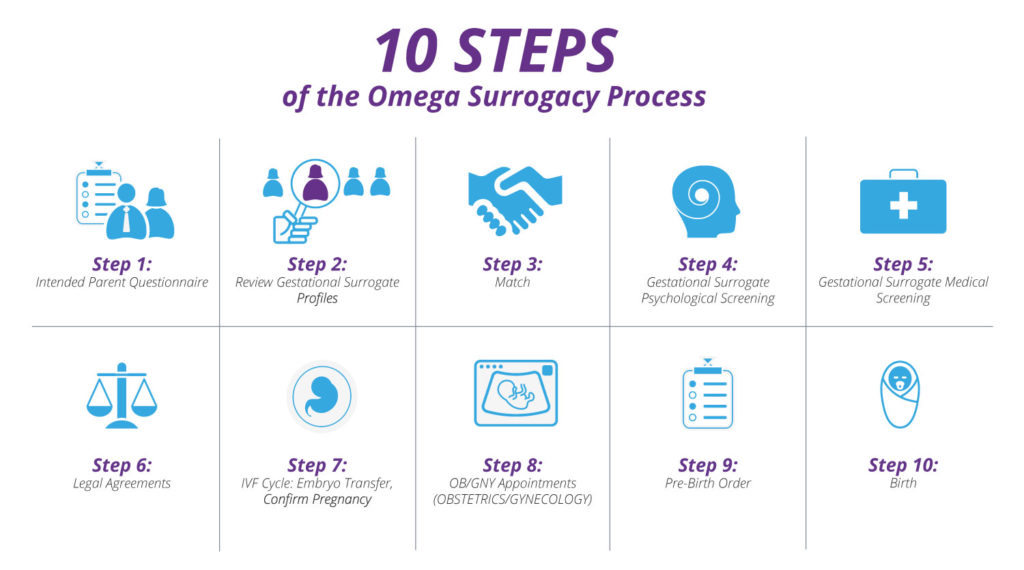Where are we in the Surrogacy Journey?
Embryo Transfers are one of the most exciting and anticipated moments of the Surrogacy Process because if the pregnancy evolves, the Intended Parents are just months away from welcoming their baby home. Intended Parents are excited because they have gone through so much to finally have their embryo ready to grow in an environment that will allow them to become parents soon.
Lifestyle preparation for the Surrogates
Women who become Surrogates do everything they can to maintain a healthy lifestyle. They prepare themselves so that the embryo can find a perfect place to develop and grow. This involves many things such as an appropriate diet, no alcohol consumption, an appropriate mindset, and most of all, the compassionate and selfless giving attitude that characterizes the Surrogate.
Surrogate medication prep
Fertility clinics are different, but they all prescribe medications for the Surrogate to take before, during, and after the Embryo Transfer. Being a Surrogate does entail a lot of commitment, especially understanding required medications and following medical instructions at home to a T.
The medications that you will be taking in most cases are estrogen and progesterone. There are different types of progesterone, and you may have to take more than one type.
Estrogen is a hormone that will serve to thicken the uterine lining during the menstrual cycle and continues during pregnancy. Estrogen can be taken orally (pill) or via injection. Nausea, headache, bloating, increased vaginal discharge, and breast tenderness are the most common side effects.
Progesterone is a hormone needed for support of implantation and early pregnancy. Progesterone can be given in oral, vaginal, and injection form. Your physician will determine which progesterone method is best for you. Side effects include bloating, vaginal spotting or bleeding, uterine cramping, breast fullness, lightheadedness, and vaginal irritation.
Embryo thawing
On the date of the embryo transfer, the Fertility Clinic thaws the number of embryos that have been previously agreed upon. Some IPs want to transfer multiple embryos to enhance the chance of at least one attaching to the uterus, or they are looking for multiple births.
It takes approximately one hour to thaw the embryos. Sometimes the embryos thaw properly, and other times they do not. When they do not and the IPs have more at that clinic, then the wait of the embryo transfer procedure will be longer. The process in itself lasts about 5 minutes.
After the transfer
The transfer is a short medical process. The doctor will have a set of instructions that the Surrogate will need to follow after the transfer. Some doctors require bed rest, but others may just recommend taking it easy. Each Surrogate will have her own experience but what remains true is that the Surrogate will require her support team to be there for her. The medications must still be taken to help enhance the probability of the embryo implanting. Every Surrogate does all that can be done for a successful pregnancy.
Intended mother’s age
The embryo is created in a laboratory utilizing the mother’s egg and the father’s sperm when possible. The process is called in-vitro fertilization. When a couple so chooses, they can freeze their embryos; it is recommended that they do this at the earliest age possible. It is more probable that an embryo from younger couples will implant than that of an older couple. The Surrogate’s age in these scenarios does not matter as much as the age of the parent’s gametes when the embryo was created.
Things do happen
If as a Surrogate you have done everything by the book and as the Surrogacy Agency and the Fertility Clinic have recommended and a failed transfer happens, it’s ok. It’s a hard thing to go through because you do want to make a pregnancy happen for the Intended Parents. They have gone through so much to be able to come to this moment and for the transfer not to be successful… can be heartbreaking.
Some IPs will break the relationship with the specific Surrogate because the embryo did not implant. Other IPs will not want to work with another Surrogate. The next step depends on how the individuals matched in the relationship decide to view it. There are Surrogates who are rematched with other IPs, and other IPs who decide to remain with their Surrogate.
Why do things happen?
An embryo may not implant because the Surrogate’s body does not respond well to the estrogen and/or progesterone. That is why some doctors choose to perform a mock cycle in which the doctor will see how the body responds to the medication and see if it is ready for the embryo transfer without having to use an actual embryo. This is also why Surrogacy Agencies are very careful when they choose the women that will serve as Surrogates.
There are other factors such as lifestyle and high BMI or other conditions that can affect embryo implantation. This is why it’s important to work with a Surrogacy Company like Omega Family Surrogates, because they choose Surrogates will not present these risks, or at least reduce them to a point where they will not be a factor.
There are medical factors such as chromosomal abnormalities found in the embryos that can lead to a miscarriage. Sometimes the quality of the embryo does not allow for it to develop; it may seem perfectly normal and good at the clinic, but not develop later.
That is what we are here for
Omega Family Surrogates is present for Surrogates and Intended Parents to provide support and understanding through the process. If it goes well or if it doesn’t Omega Family Surrogates through their amazing support team, Surrogate Liaisons, and Omega Surrogate Stories provide the network and emotional comfort that a Surrogate may need. Omega loves supporting both Intended Parents and Surrogates; it’s part of what they do and who they are.
Click the image to apply now:





